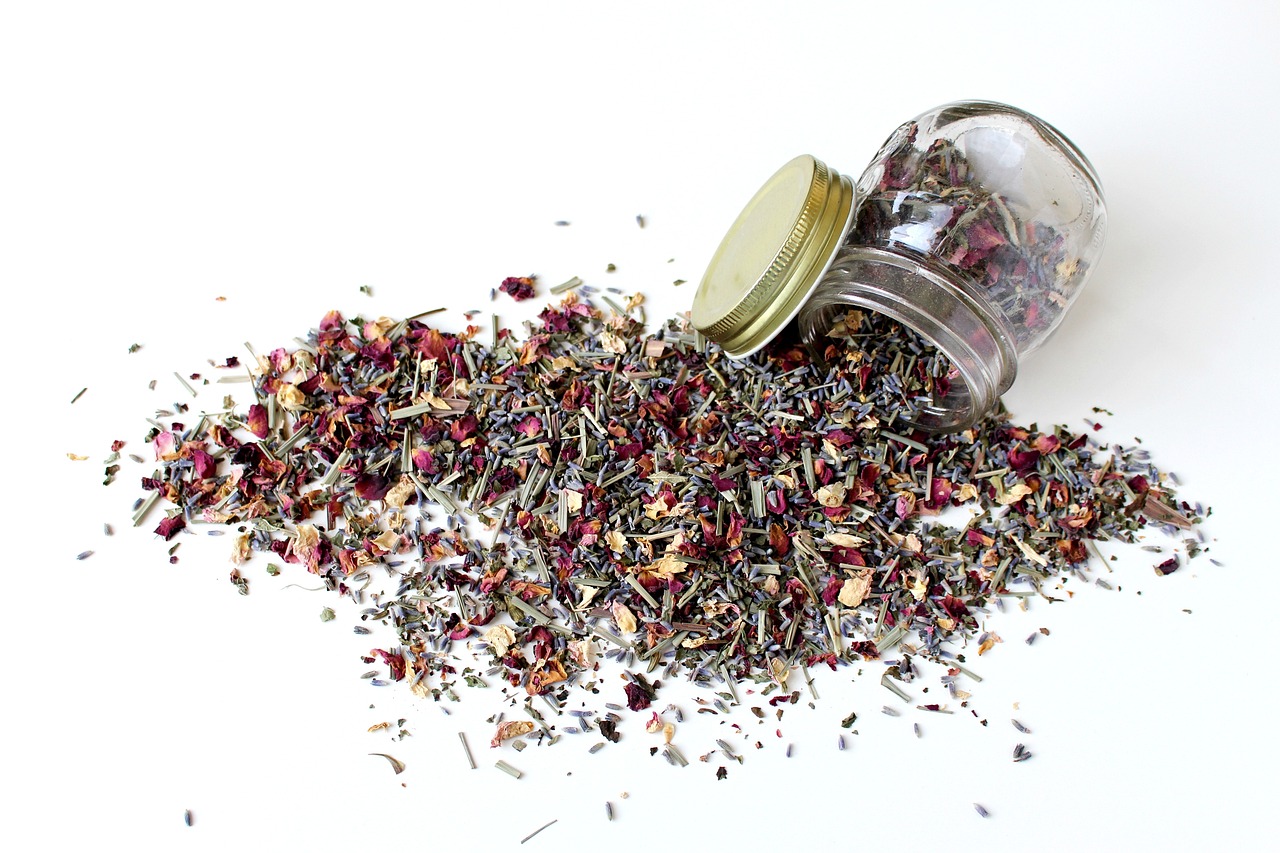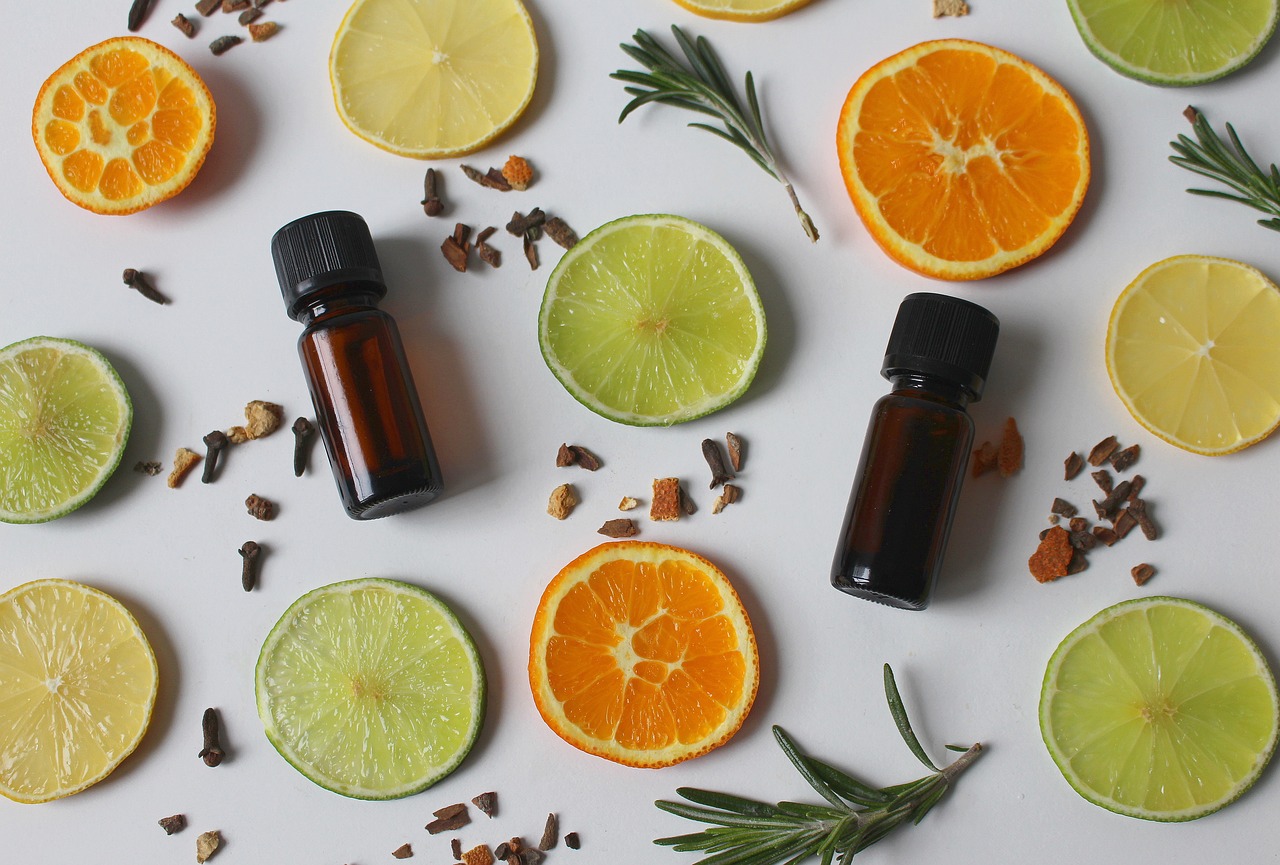Managing Seasonal Affective Disorder (SAD)~ Seasonal Affective Disorder (SAD) is a type of depression that affects people during the winter months when there is less sunlight. Symptoms of SAD include low mood, lack of energy, and difficulty sleeping. While there are several treatments available for SAD, many people are turning to herbal remedies as a natural alternative.
Disclaimer: This article is provided for informational purposes only and should not replace professional medical advice. Please consult with a qualified healthcare practitioner or herbalist before using any herbal remedies.
Herbal remedies have been used for centuries to treat a variety of ailments, including depression. Some of the most commonly used herbs for SAD include St. John’s Wort, Rhodiola Rosea, and Ashwagandha. These herbs are believed to work by regulating the levels of neurotransmitters in the brain, such as serotonin and dopamine, which play a role in mood regulation.
While herbal remedies are generally considered safe, it is important to speak with a healthcare provider before using them to manage SAD. Some herbs can interact with prescription medications or have side effects. Additionally, the quality and purity of herbal supplements can vary, so it is important to purchase them from a reputable source. In the following sections, we will explore the benefits and potential risks of using herbal remedies to manage SAD.
Understanding Seasonal Affective Disorder
As we approach the winter months, many of us may experience a shift in our mood and energy levels. This is commonly referred to as the “winter blues” or seasonal affective disorder (SAD). SAD is a type of depression that is related to changes in seasons, with symptoms typically starting in the fall and continuing through the winter months.
The exact cause of SAD is not fully understood, but it is believed to be related to changes in the amount of daylight we are exposed to. Reduced sunlight can disrupt our circadian rhythm and affect the production of serotonin and melatonin, both of which play a role in regulating mood.
Symptoms of SAD can vary, but commonly include feelings of sadness, hopelessness, and anxiety. Other symptoms may include changes in appetite, weight gain, difficulty concentrating, and loss of interest in activities. SAD is often mistaken for winter depression, which is a type of depressive disorder that is not seasonal in nature.
While the symptoms of SAD can be difficult to manage, there are several herbal remedies that may be effective in reducing depressive symptoms. For example, St. John’s Wort has been shown to be effective in treating mild to moderate depression, while chamomile and lavender can help promote relaxation and reduce anxiety.
It is important to note that herbal remedies are not a substitute for professional medical treatment. If you are experiencing symptoms of SAD or other depressive disorders, it is important to seek the advice of a healthcare professional. They can help determine the best course of treatment for your individual needs.
Diagnosis and Professional Help
If you suspect that you have Seasonal Affective Disorder (SAD), it is important to consult a doctor or a mental health professional. They can help you to determine if you have SAD or another type of depression that shares similar symptoms.
Consulting a Doctor
When you visit a doctor, they will begin by asking you about your symptoms and medical history. They may also perform a physical exam to rule out any underlying medical conditions that could be causing your symptoms. If your doctor suspects that you have SAD, they may refer you to a mental health professional for further evaluation.
Role of a Psychologist
A psychologist can perform a psychological evaluation to determine if you have SAD. They may ask you to fill out a questionnaire about your symptoms and how they are affecting your daily life. They may also ask you about your family history of depression and any other mental health conditions you may have.
If you are diagnosed with SAD, your doctor or psychologist may recommend various treatments, including herbal remedies, light therapy, and cognitive-behavioral therapy. It is important to follow their recommendations and attend regular appointments to monitor your progress.
Remember, seeking professional help is the first step towards managing SAD. Don’t hesitate to schedule an appointment with your doctor or a mental health professional if you suspect that you have SAD or any other mental health condition.
Impact on Mental and Physical Health
When it comes to managing seasonal affective disorder (SAD) with herbal remedies, it is important to consider the impact on both our mental and physical health. SAD can have a significant impact on our mood, energy levels, and overall well-being, and herbal remedies can help address these issues in a natural way.
One of the key ways that herbal remedies can help with SAD is by addressing imbalances in brain chemistry. For example, some herbs can help boost serotonin levels, which can help improve mood and reduce symptoms of depression. Other herbs can help promote relaxation and reduce stress, which can be particularly helpful for those who struggle with anxiety or insomnia.
In addition to addressing mental health concerns, herbal remedies can also have a positive impact on our physical health. For example, some herbs can help regulate appetite and reduce cravings, which can be helpful for those who struggle with weight gain during the winter months. Other herbs can help improve sleep quality and regulate our circadian rhythms, which can be disrupted by the shorter days and longer nights of winter.
Of course, it is important to remember that herbal remedies should not be used as a replacement for professional medical care. If you are struggling with SAD or other mental health concerns, it is important to seek the guidance of a mental health professional who can help you develop a comprehensive treatment plan. However, herbal remedies can be a helpful complement to other forms of treatment, and can help support our overall mental and physical well-being.
Conventional Treatment Methods
When it comes to managing Seasonal Affective Disorder (SAD), conventional treatment methods usually involve a combination of light therapy, medication, and therapy.
Light Therapy
Light therapy, also known as phototherapy, involves exposing oneself to bright light to help regulate serotonin levels in the brain. This is typically done using a lightbox that emits bright light. Research has shown that light therapy can be effective in reducing SAD symptoms in up to 70% of cases [1].
Medication and Therapy
Antidepressants are commonly prescribed for individuals with SAD. These medications work by increasing the levels of serotonin in the brain. Talk therapy, such as cognitive-behavioral therapy (CBT), can also be helpful in managing SAD symptoms. CBT can help individuals identify negative thought patterns and develop coping strategies for dealing with them [2].
While conventional treatment methods can be effective for managing SAD, some individuals may prefer to explore alternative treatment options, such as herbal remedies. However, it is important to consult with a healthcare professional before trying any new treatment method.
Lifestyle Changes and Self-Care~ Managing Seasonal Affective Disorder (SAD)
When it comes to managing Seasonal Affective Disorder (SAD), lifestyle changes and self-care can play a crucial role in alleviating symptoms. By making some simple adjustments to our daily routines, we can improve our overall well-being and reduce the impact of SAD on our lives.
Exercise and Physical Activity
Regular exercise and physical activity are important for maintaining good mental health, especially during the winter months when we may be less active. Engaging in aerobic exercise, such as walking, swimming, or dancing, can help boost our mood and energy levels. Even 30 minutes of moderate exercise each day can have a significant impact on our mental health.
Diet and Nutrition
Eating a healthy, balanced diet can also help manage SAD symptoms. We should aim to eat plenty of fruits, vegetables, and whole grains, while limiting our intake of processed foods and sugars. Omega-3 fatty acids, found in foods like salmon, walnuts, and flaxseed, have been shown to improve mood and reduce symptoms of depression. It’s also important to stay hydrated by drinking plenty of water throughout the day.
Making these lifestyle changes and engaging in self-care practices can help us manage SAD symptoms and improve our overall well-being. By incorporating exercise and physical activity into our daily routines, and making healthy dietary choices, we can take control of our mental health and feel our best all year round.
Herbal Remedies and Supplements~ Managing Seasonal Affective Disorder (SAD)
If you suffer from Seasonal Affective Disorder (SAD), you may be looking for natural remedies to help manage your symptoms. Herbal remedies and supplements can be a great option for those looking for a more natural approach to managing SAD. Here are a few options that may be helpful:
St. John’s Wort
St. John’s Wort is a popular herbal supplement that has been used for centuries to treat depression. Studies have shown that it may be effective in treating mild to moderate depression, including SAD. St. John’s Wort works by increasing levels of serotonin in the brain, which can help improve mood. However, it is important to note that St. John’s Wort can interact with some medications, so it is important to speak with your doctor before taking it.
Vitamin D
Vitamin D deficiency has been linked to depression, and many people with SAD have been found to have low levels of vitamin D. Taking a vitamin D supplement may help improve mood and reduce symptoms of SAD. You can also get vitamin D from sunlight, but during the winter months, it can be difficult to get enough sun exposure.
Omega-3 Fatty Acids
Omega-3 fatty acids are essential fats that our bodies need to function properly. They have been shown to have a number of health benefits, including reducing inflammation, improving heart health, and reducing symptoms of depression. Some studies have found that omega-3 supplements may be helpful in reducing symptoms of SAD. You can get omega-3s from fatty fish like salmon, as well as nuts and seeds.
In summary, herbal remedies and supplements can be a great option for managing SAD symptoms. St. John’s Wort, vitamin D, and omega-3 fatty acids are just a few of the options available. It’s important to speak with your doctor before starting any new supplements to make sure they are safe for you to take and won’t interact with any medications you are already taking.
Mindfulness and Mental Exercises~ Managing Seasonal Affective Disorder (SAD)
When it comes to managing Seasonal Affective Disorder (SAD), mindfulness and mental exercises can be a great addition to herbal remedies. These exercises can help improve mood, energy, and endorphins, while also reducing stress and anxiety.
Meditation
Meditation is a mental exercise that involves focusing on your breath or a specific object to help calm your mind and reduce stress. It has been shown to improve mood and reduce symptoms of depression and anxiety [1]. There are many different types of meditation, including mindfulness meditation, which involves focusing on the present moment without judgment.
To practice mindfulness meditation, find a quiet place where you can sit comfortably. Close your eyes and focus on your breath, feeling the sensation of the air moving in and out of your body. If your mind starts to wander, gently bring your attention back to your breath. You can start with just a few minutes a day and gradually increase the time as you become more comfortable.
Mindfulness
Mindfulness is a mental state of being aware of the present moment and accepting it without judgment. It can be practiced during daily activities such as eating, walking, or even washing dishes. Mindfulness has been shown to improve mood and reduce symptoms of depression and anxiety [2].
To practice mindfulness, focus on the present moment and try to bring your attention to your senses. Notice the sights, sounds, smells, and sensations around you without judgment. You can also try a body scan, where you focus on each part of your body and notice any sensations or tension.
Incorporating mindfulness and meditation into your daily routine can be a great way to manage SAD symptoms and improve your overall well-being.
References:
[1] Sharma, H., & Datta, P. (2019). Meditation: Process and effects. Ayu, 40(1), 3–6. https://doi.org/10.4103/ayu.AYU_213_18
[2] Khoury, B., Lecomte, T., Fortin, G., Masse, M., Therien, P., Bouchard, V., Chapleau, M. A., Paquin, K., & Hofmann, S. G. (2013). Mindfulness-based therapy: A comprehensive meta-analysis. Clinical Psychology Review, 33(6), 763–771. https://doi.org/10.1016/j.cpr.2013.05.005
Environmental Adjustments~ Managing Seasonal Affective Disorder (SAD)
When it comes to managing Seasonal Affective Disorder (SAD), we need to make some necessary changes in our environment. These changes can help us to alleviate the symptoms of SAD. Here are some environmental adjustments that we can make to manage SAD:
Light Exposure~ Managing Seasonal Affective Disorder (SAD)
Light exposure plays a crucial role in managing SAD. Lack of sunlight can cause mood swings and depression. Therefore, we need to expose ourselves to natural sunlight as much as possible. We can go for a walk outside during the day or sit near a window to get some sunlight.
If natural sunlight is not available, we can use a dawn simulator or full-spectrum lighting. A dawn simulator is a device that mimics the sunrise and helps us to wake up naturally. Full-spectrum lighting is a type of lighting that mimics natural sunlight and helps to regulate our circadian rhythm.
We can also use a light therapy box to manage SAD. A light therapy box emits bright light that mimics natural sunlight. We can sit in front of the light therapy box for 30 minutes to an hour every day to alleviate the symptoms of SAD.
Comfort and Routine~ Managing Seasonal Affective Disorder (SAD)
Comfort and routine are essential for managing SAD. We need to create a comfortable and cozy environment that can help us to relax and feel better. Use comfortable blankets, pillows, and soft lighting to create a warm and cozy atmosphere.
We also need to establish a routine that can help us to manage our symptoms. Setting a regular sleep schedule, exercise routine, and meal plan to regulate our circadian rhythm and improve our mood.
In conclusion, environmental adjustments can be an effective way to manage SAD. We need to expose ourselves to natural sunlight, use full-spectrum lighting or a light therapy box, and create a comfortable and routine environment to alleviate the symptoms of SAD.
Conclusion~ Managing Seasonal Affective Disorder (SAD)
In conclusion, managing Seasonal Affective Disorder (SAD) with herbal remedies can be an effective way to improve our well-being during the winter months. While lifestyle changes such as exercise and getting enough sleep can also help alleviate symptoms, incorporating natural remedies into our daily routine can provide additional support.
Some of the most commonly used herbal remedies for SAD include St. John’s Wort, Rhodiola, and Ashwagandha. These herbs have been shown to have mood-boosting properties, and can help reduce feelings of anxiety and depression.
In addition to herbal remedies, practicing mindfulness and creating a positive environment can also be beneficial. Taking time to meditate or practice yoga can help reduce stress levels, while surrounding ourselves with uplifting decor and lighting can improve our mood.
It’s important to note that while herbal remedies can be a helpful addition to our SAD management plan, they should not be used as a substitute for professional medical advice. It’s always a good idea to consult with a healthcare provider before starting any new supplement or herbal remedy.
Overall, by incorporating natural remedies, mindfulness, and positive lifestyle changes into our daily routine, we can better manage the symptoms of SAD and improve our overall well-being during the winter months.








2 Comments on “Managing Seasonal Affective Disorder (SAD) with Herbal Remedies: A Natural Solution”